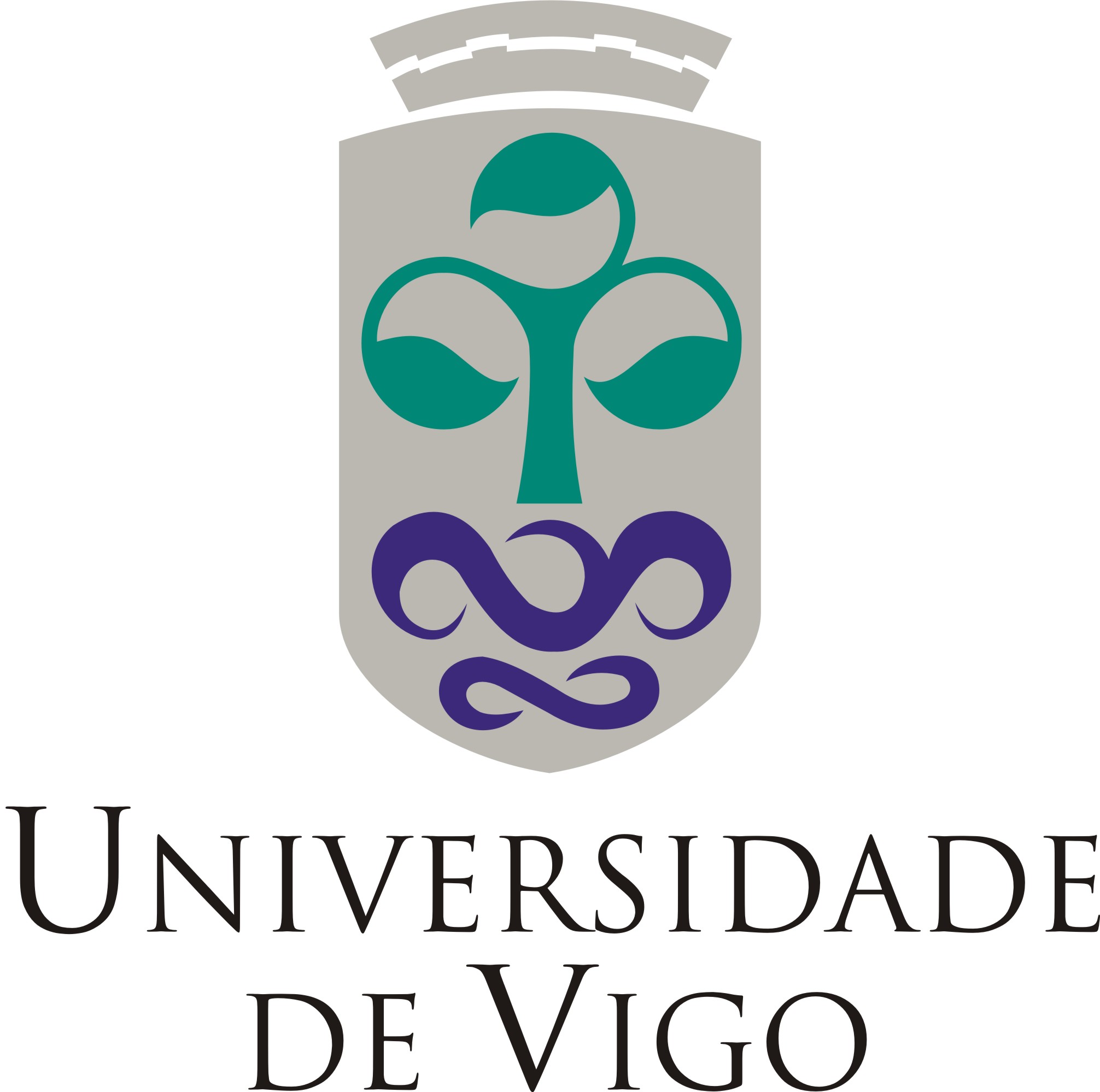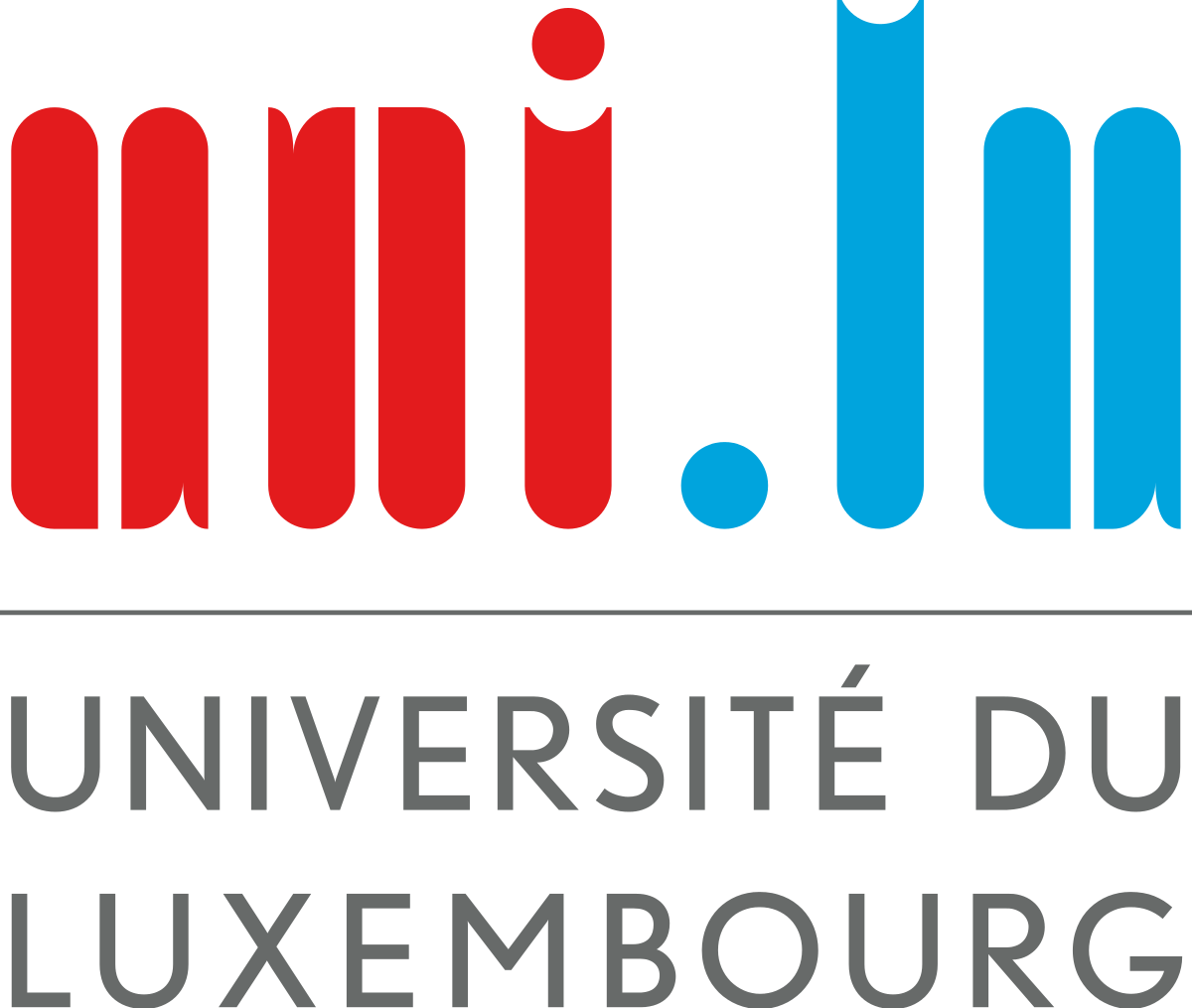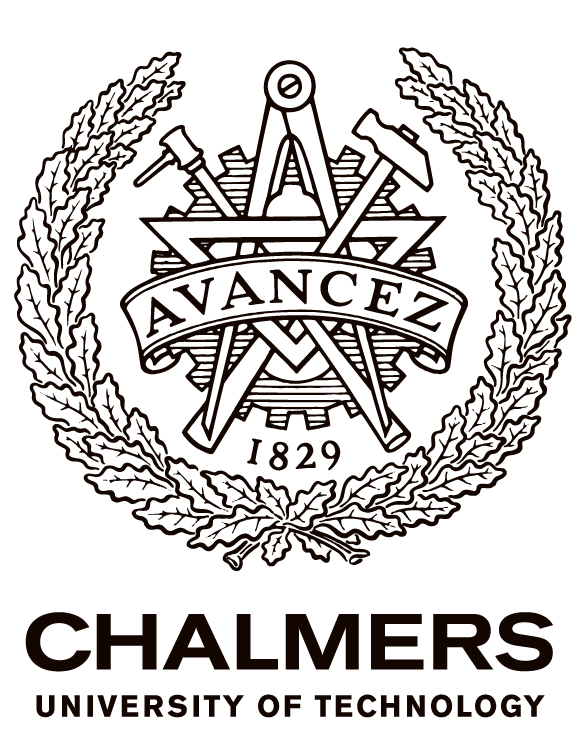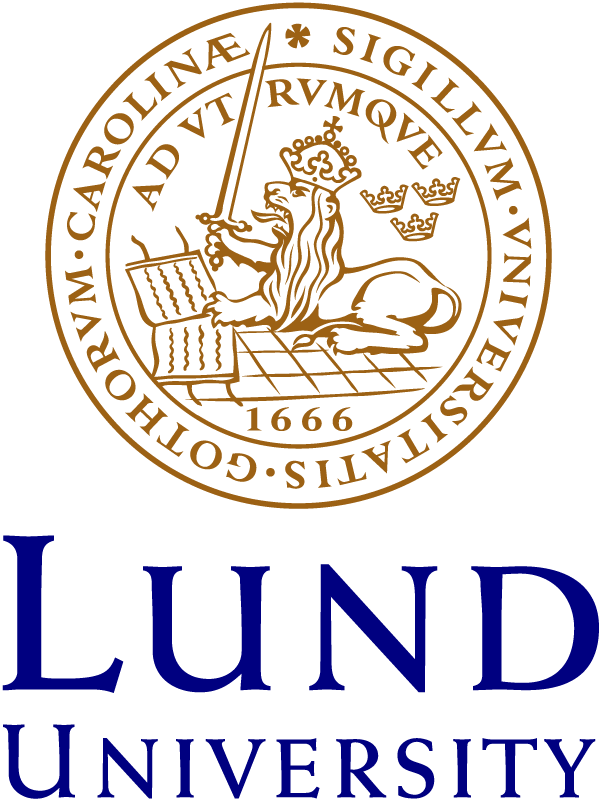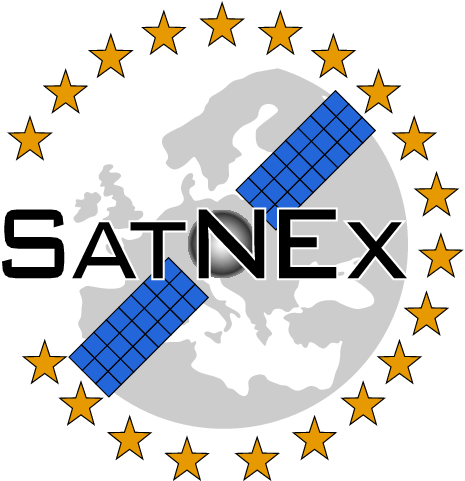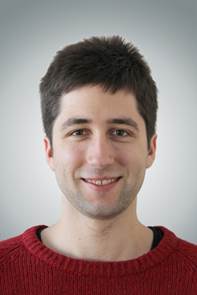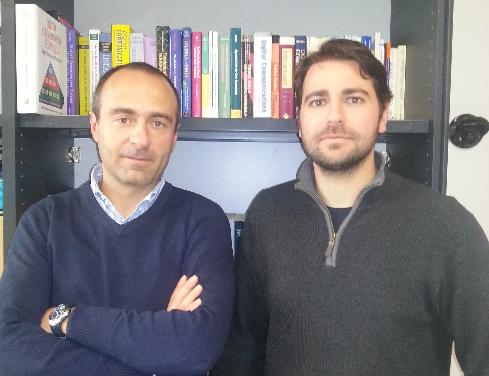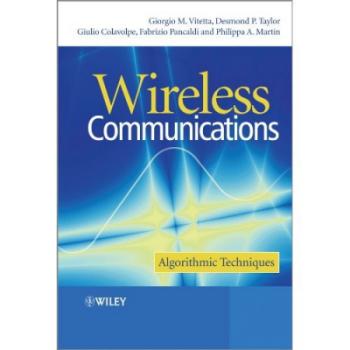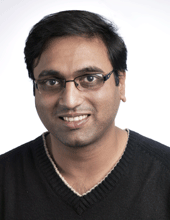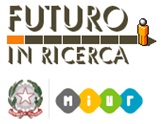SPADiC Lab
Signal Processing for Advanced Digital Communications Lab
December 2024: Elisa Conti received her PhD degree in Information Technology
Elisa Conti received his PhD degree in Information Technology discussing a thesis on "Advanced Graph-Based Detection for Wireless Channels".
April 2024: RESTART Cascade Call activities started
Project "INFINITE - An Integrated and Sustainable Terrestrial/Non-Terrestrial Ecosystem for Anytime/Anywhere 6G Connectivity" funded under the National Recovery and Resilience Plan (NRRP), Mission 4 Component 2 Investment 1.3 – Cascade Call related to the Program "RESearch and innovation on future Telecommunications systems and networks, to make Italy more smart – Spoke 2" funded by the European Union – NextGenerationEU started its activities on 23 April 2024. Click here for more information

March 2024: Marco Morini received his PhD degree in Information Technology
Marco Morini received his PhD degree in Information Technology discussing a thesis on "Advanced synchronization and estimation techniques for modern satellite communications".
September 2022: DYNASAT Consortium presentation
Amina Piemontese, Assistant Professor at the University of Parma, talks us through the importance of bandwidth-efficient techniques to increase the efficiency of NTNs in 5G, focusing on the long-term techniques currently under investigation within the DYNASAT project.December 2020: H2020 project DYNASAT kick-off
The DYNASAT project, funded by the European Commission through the Horizon 2020 program, aims to research, develop and demonstrate bandwidth-efficient transmission techniques for an advanced non-geostationary satellite access infrastructure servicing mass-market and professional 5G user equipment (e.g., smartphones) in unserved or underserved areas.DYNASAT gathers six partners with complementary expertise in bandwidth and spectrum efficient satellite communication techniques from Italy, Finland, France, and Switzerland. The partners have officially started their collaboration during the virtual kick-off meeting held on Dec. 17, 2020.
Partners: University of Bologna (UNIBO), Martel Innovate, Thales Alenia Space France, Magister Solutions, Fairspectrum, University of Parma (UNIPR).

April 2021: Lorenzo Gaudio received his PhD degree in Information Technology
Lorenzo Gaudio received his PhD degree in Information Technology discussing a thesis on "Multi-carrier modulations over sparse channels: communication, channel estimation, and radar sensing".
April 2019: Best paper award at WCNC 2019
Alessandro Ugolini received the best paper award at the IEEE Wireless Communications and Networking Conference (WCNC 2019), Marrakech, Morocco, for the paper "Design of spiral constellations for phase noise channels," joint work with Amina Piemontese and Thomas Eriksson, from Chalmers University of Technology, Gothenburg, Sweden, and Changhao Du, from Beijing Insitute of Technology, Beijing, China.
IEEE WCNC 2019 Logo.
Spring 2019: visiting PhD student at SPADiC Lab
Tomás Ramírez, from the University of Vigo, Spain, has been a visiting PhD student at SPADiC Lab. His research topics include the study of multibeam satellite communications scenarios.Short biography
Tomás Ramírez received Telecommunications Engineering degree from University of Vigo, Galicia, Spain, in 2015. He has been working at the Signal Theory and Communications Department in the University of Vigo since 2015 as an associate researcher. He has collaborated in different SatNex(Satellite Network of Experts) projects, funded by the European Space Agency. He is currently working towards the Ph.D. degree with the University of Vigo in the area of satellite communications. His research focuses on satellite communications, MIMO communications and information theory.October 2018: Lorenzo Gaudio visiting PhD student at Technical University Berlin
Lorenzo Gaudio will be visiting PhD student at Technical University Berlin for three months starting in October 2018. He will collaborate with Prof. Giuseppe Caire.September 2018: Kick-off of a research project funded by ESA
The SPADiC Lab team will work on the project "Demonstrator of advanced physical layer techniques for unicast broadband applications", funded by European Space Agency (ESA-ESTEC), together with partners Space Technology, University of Bologna, and Politecnico di Torino.September 2018: SatNEx IV research exchange
The SPADiC Lab team will work on a research exchange on the topic "3GPP New Radio SW Implementation and Performance Assessment for Satellite Networks", in the framework of the Satellite Network of Experts (SatNEx IV), together with University of Bologna.June 2018: Visiting student at SPADiC Lab
Yassine Belfatmi, from Bordeaux Graduate School of Engineering, Bordeaux, France, has been a visiting student at SPADiC Lab since June 2018. His activity consists on the study of techniques for frame synchronization.
Bordeaux Graduate School of Engineering.
March 2018: Yuri Zanettini received his PhD degree in Information Technology
Yuri Zanettini received his PhD degree in Information Technology discussing a thesis on "Techniques for interference mitigation in satellite communications".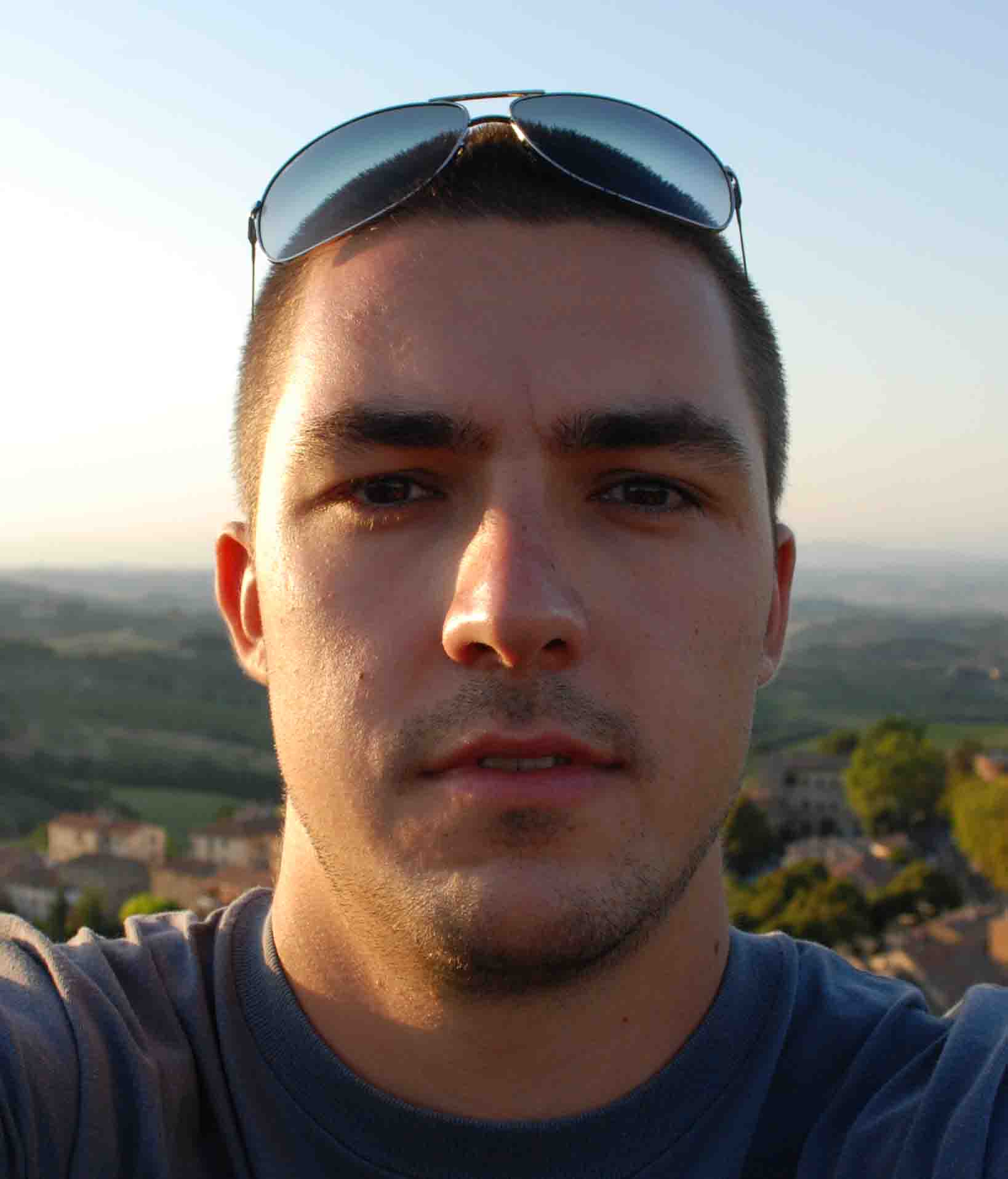
Dr. Yuri Zanettini.
March 2018: Michelangelo Ricciulli received his PhD degree in Information Technology
Michelangelo Ricciulli received his PhD degree in Information Technology discussing a thesis on "Advanced transceivers for satellite communications".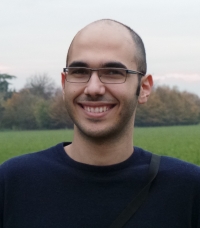
Dr. Michelangelo Ricciulli.
December 2017: Alessandro Ugolini visiting researcher at University of Luxembourg
Alessandro Ugolini will be visiting researcher at Interdisciplinary Centre for Security, Reliability and Trust of the University of Luxembourg for two months starting in December 2017. The visit is funded by a mobility grant from the Satellite Network of Experts (SatNEx IV) framework.April 2017: Alessandro Ugolini visiting researcher at Chalmers University of Technology
Alessandro Ugolini will be visiting researcher at Chalmers University of Technology for two months starting in April 2017. He will collaborate with Prof. Thomas Eriksson in the Communication and Antenna Systems division.January 2017: Michelangelo Ricciulli visiting PhD student at Lund University
Michelangelo Ricciulli will be visiting PhD student at Lund University for two months starting in January 2017. He will collaborate with Prof. Fredrik Rusek in the Electrical and Information Technology group.January 2017: Visiting PhD student at SPADiC Lab
Hao-Su Zhou, from Nanjing University of Science and Technology, Nanjing, China, has been a visiting PhD student at SPADiC Lab since January 2017. His research topics include digital communications and automatic identification systemShort biography
Hao-Su Zhou was born in 1989. He received his BS in School of Electronic and Optical Engineering, Nanjing University of Science and Technology, Nanjing, China, in 2012. Since September 2012, he has been a PhD candidate in the School of Electronic and Optical Engineering in the same university. His main research interests include digital communications and automatic identification system.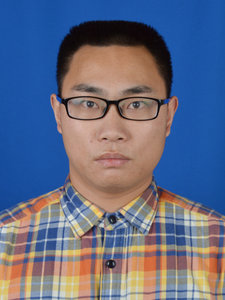
Hao-Su Zhou.
March 2016: Alessandro Ugolini received his PhD degree in Information Technology
Alessandro Ugolini received his PhD degree in Information Technology discussing a thesis on "Physical and MAC layer techniques for next generation satellite communications".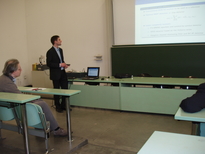
Dr. Alessandro Ugolini's dissertation.
February 2016: Kick-off of a research project funded by ESA
The SPADiC Lab team will work on the project "Optimized transmission techniques for SATCOM unicast interactive traffic", funded by European Space Agency (ESA-ESTEC), together with partners University of Bologna, Politecnico di Torino, and University of Luxembourg.December 2015: Completed research project funded by ESA
The project "Interference management techniques for satellite networks", funded by European Space Agency (ESA-ESTEC), in which SPADiC Lab has collaborated with University of Bologna and Politecnico di Torino on the investigation of advanced techniques for broadcasting in satellite networks, has been completed.November 2015: Malek Messai received his PhD degree in Information Science and Technology
Malek Messai, visiting PhD student at SPADiC Lab in 2014, received his PhD in Information Science and Technology from Telecom Bretagne University, Brest, France, discussing a thesis entitled "Application des signaux CPM pour la collecte de données à grande échelle provenant d'émetteurs faible coût".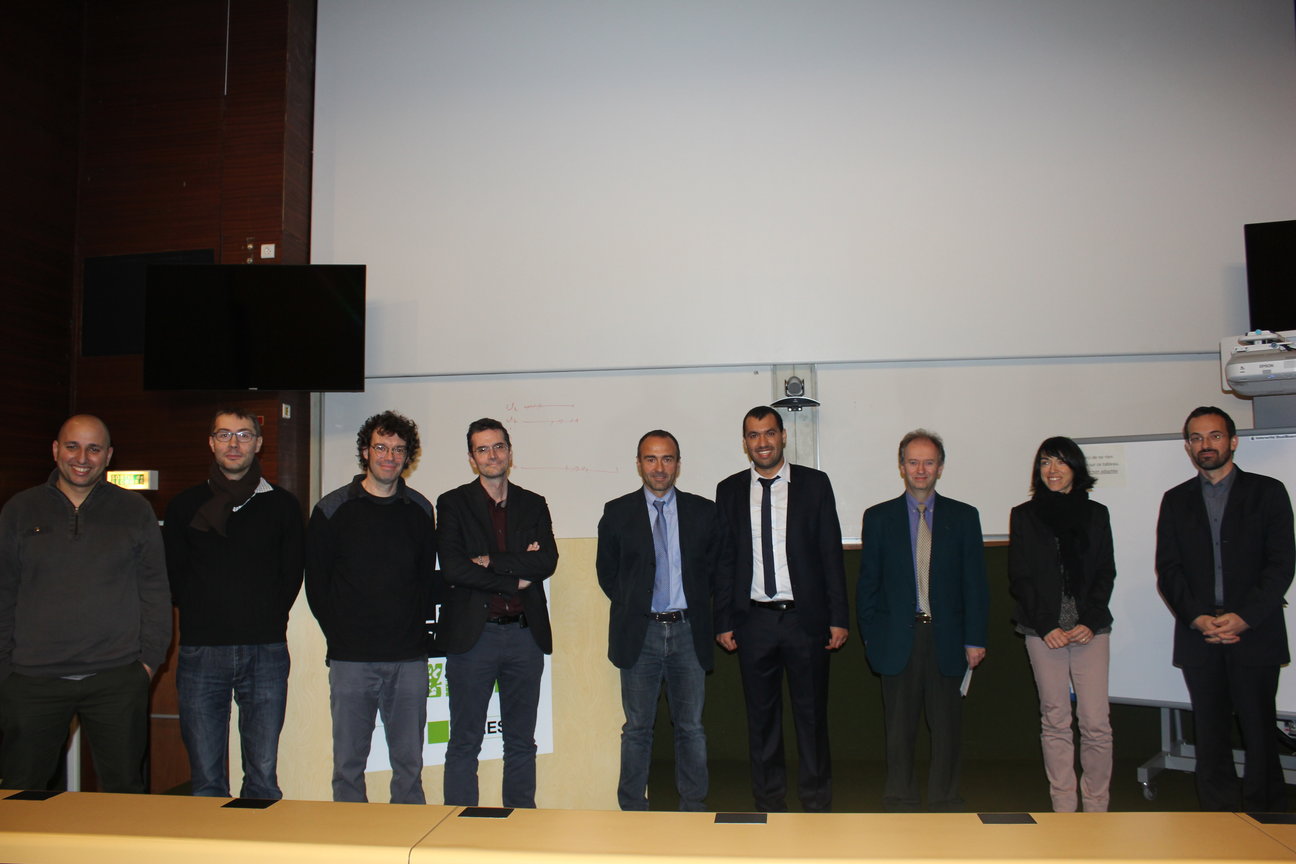
Dr. Malek Messai after his dissertation.
May 2015: Marie Curie research proposal funded
Amina Piemontese will join Chalmers University in May 2015, thanks to a mobility research grant funded by the European Commission within the Marie Curie Fellowship Programme. The research project is entitled "Distributed storage based on sparse-graph codes", and will last two years under the supervision of Prof. Alexandre Graell i Amat.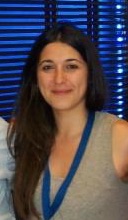
Dr. Amina Piemontese.
March 2015: Andrea Modenini moves to ESA-ESTEC
Dr. Andrea Modenini will be a contractor at HE Space for European Space Agency - European Space Research and Technology Centre (ESA-ESTEC), Noordwijk, The Netherlands. The team of SPADiC Lab thanks him for his years with us, and wishes him good luck for his career.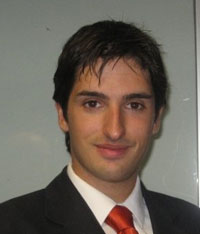
Dr. Andrea Modenini.
December 2014: SPADiC Lab is a member of the SatNEx IV
The SPADiC Lab is a member of the Satellite Network of Experts (SatNEx IV), a framework activity of the European Space Agency (ESA) in the field of satellite telecommunications systems. SatNEx IV activities aim to study medium/long term directions of satellite telecommunication systems for any of the commercial or institutional applications that can be considered appealing by key players but still not mature enough for attracting industry or initiating dedicated ESA R&D activities.Autumn 2014: Visiting PhD student at SPADiC Lab
Malek Messai, from Telecom Bretagne University, Brest, France, has been a visiting PhD student at SPADiC Lab during the Autumn of 2014. His research topics include communications systems and information theory with particular emphasis on CPM modulation.Short biography
Malek Messai was born in Tunisia, on 20 December 1988. He received the Dr. Eng. degree in Telecommunications Engineering in September 2012 from High School of Communications of Tunis, SUP'COM. Since October 2012 he has been a Ph.D. student at the SC department of Telecom Bretagne.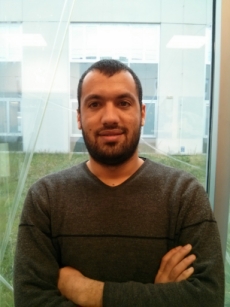
Malek Messai.
October 2014: Visiting DLR researcher at SPADiC Lab
Tudor Ninacs, from Deutschen Zentrums für Luft- und Raumfahrt (DLR), Germany, has been visiting SPADiC Lab.Short biography
Tudor Ninacs was born on the 27th of February 1988 in Brașov, Romania, where he graduated from the Andrei Șaguna National College in 2007. In the same year he moved to Germany to study Electrical Engineering and Information Technology at the Technical University of Munich (TUM), specializing in Communications Engineering. In the year 2012 he earned the academic degree of Dipl. Ing. (equivalent to M.Sc.) with the Diploma thesis entitled "Spatially-Coupled Low-Density Parity-Check Codes for Satellite Communication: Performance Analysis and Implementation Aspects", written in cooperation with the German Aerospace Center (DLR) in Oberpfaffenhofen, Germany. Since 2013 he is with the Satellite Networks Department of the Institute for Communications and Navigation of the DLR in Oberpfaffenhofen and is involved with deep space and planetary communication techniques as well as with forward error correction schemes for free-space optical communication systems. Next to the above mentioned topics, his interests also involve joint synchronization and decoding techniques, topic on which he works together with the Spadic Lab in Parma, led by Professor Colavolpe.July 2014: Paper on TFP for optical communications accepted on IEEE T. Comm.
The paper by Giulio Colavolpe and Tommaso Foggi, dealing with the application of time-frequency packing (TFP) techniques on optical communications, has been accepted on IEEE Transaction on Communication. This work focuses on the comparison between TFP QPSK and (Nyquist-WDM) higher-order modulation formats, and on the evaluation of their performance in realistic optical links. The paper is already available on ArXiv.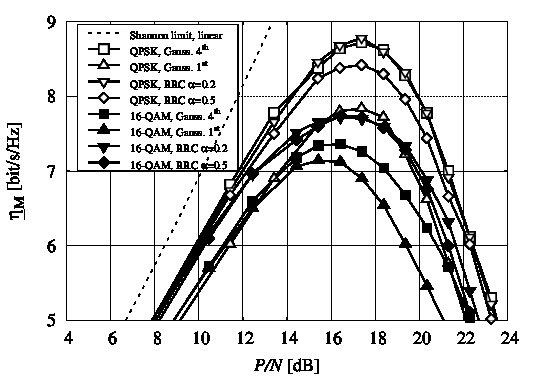
June 2014: Best PhD thesis award
Dr. Andrea Modenini won the best PhD thesis award issued by GTTI for his thesis "Advanced transceivers for spectrally-efficient communications". GTTI establishes an annual award in recognition of the best PhD theses defended at an Italian university in the areas of communications technologies (signal processing, digital communications, networking). The theses have been evaluated by a committee whose members are distinguished professors and non-academic experts in the field.
GTTI logo.
April 2014: Nicolò Mazzali moves to University of Luxembourg
Dr. Nicolò Mazzali has signed a two years contract as a postdoc researcher at University of Luxembourg. The team of SPADiC Lab thanks him for his years with us, and wishes him good luck for his career.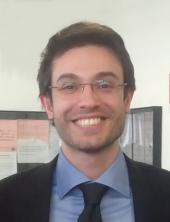
Dr. Nicolò Mazzali.
March 2014: Andrea Modenini received his PhD degree in Information Technology
Andrea Modenini received his PhD degree in Information Technology discussing a thesis on "Advanced transceivers for spectrally-efficient communications".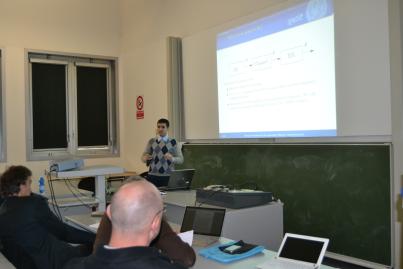
Dr. Andrea Modenini dissertation.
March 2014: Best Published Student Paper Award by EURACON
The paper "CPM-based Spread Spectrum Systems for Multi-User Communications" by Nicolò Mazzali, Giulio Colavolpe, and Stefano Buzzi was awarded the Best Published Student Paper Award in Wireless Communications by the European Association for Communications and Networking (EURACON).
January 2014: DSP Course
The course on Digital Signal Processing for Satellite communication, held by Professor Colavolpe and Dr. Andrea Modenini, will start on 27 January 2014.Syllabus
Short introduction on the main results on detection theory.MAP sequence detection and MAP symbol detection.
Modulation formats: Linear (PSK, QAM, QPSK) and continuous phase (CPM) modulations.
Laurent decomposition of CPMs. Detection of linear modulation and CPM. Reduced-complexity receivers for CPM.
Codes (with focus on decoding): Convolutional codes, block codes, turbo codes, LDPC. Viterbi and BCJR algorithm. Message-passing decoding of LDPC. LDPC mapped onto multidimensional constellations: iterative vs. non iterative demapping and decoding.
Detection in the presence of unknown parameters: synchronization. Data-aided, non-data-aided, decision directed, soft-decision-directed synchronization. Examples of algorithms for phase, frequency and timing synchronization. Bayesian estimation based on factor graphs.
Non linear satellite channels: effects of a TWTA, Volterra-series expansion, countemeasures (predistorters and detectors).
Downloads
Click hereVenue
August 2013: Nicolò Mazzali will be visiting researcher at Chalmers University
Dr. Mazzali will be visiting researcher at Chalmers University for autumn 2013. His research topics will include communications systems and information theory with particular emphasis on Massive MIMO systems.
Dr. Nicolò Mazzali.
May 2013: The SPADiC Lab designed an innovative receiver for the forthcoming satellite AIS system that will help improving safety and security in maritime communications.
This activity has been performed within the project FlexiblE InNovative AIS reCeiver prototype - FENICE funded by the European Space Agency (ESA). ESA, together with European industry, is developing a space-based system to monitor maritime traffic on a worldwide basis. One key element of the system is the Automatic Identification (AIS) receiver which is in charge of detecting the messages transmitted by the ships. From orbit, all the ships within the satellite field of view are transmitting without coordination so there will be collisions of messages coming from different ships. The challenge is to design an intelligent receiver capable of detecting the messages within a highly interferenced environment. SPADiC Lab has been pivotal in deriving the architecture of an innovative AIS receiver with performance well beyond the current state of the art. The prime contractor of the ESA activity, i.e., Compagnia Generale per lo Spazio (CGS), has successfully implemented and tested such a receiver within a laboratory prototype, confirming the excellent performance. It is estimated that such an advanced receiver will allow to reduce the cost of a high performance satellite AIS constellation roughly by a factor of 3, which corresponds to several hundreds of millions of euros. The work of SPADiC Lab has been focusing on the derivation of the advanced detection and channel estimation algorithms of the receiver which represents the core of the receiver architecture. Given the high degree of innovation of such techniques as well as the strategic importance of the application, ESA, together with the University of Parma, is seeking for Intellectual Property Protection of the new AIS receiver architecture.
Project FENICE logo.
April 2013: An agreement with RAI has been signed.
A two-years agreement with RAI-Radiotelevisione italiana S.p.A., has been signed. SPADiC Lab will support RAI in an investigation on advanced digital communication techniques to be employed to improve the spectral efficiency of satellite systems for digital video broadcasting.
RAI logo.
April 2013: A SPADiC Lab innovative high-capacity data transmission system tested on field
A brand new high-capacity data transmission system was tested by an Italian research group on a route of the commercial network owned by Telstra, located in Australia between Sydney and Melbourne. Allowing data transmission on a distance of 1000 km at a rate of 1 Terabit/s (1000 Gbit/s) over an extremely narrow frequency band, this new technology has been conceived and developed by SPADiCLab in Parma since 2008, and is based on sophisticated signal processing techniques. Namely, Prof. Giulio Colavolpe and Dr. Tommaso Foggi have studied its application to optical fiber channels, and realized the software implementing the receiver used in the study, accomplished in collaboration with Istituto TeCIP of Scuola Superiore Sant'Anna and Consorzio Nazionale per le Telecomunicazioni (CNIT) of Pisa. Such collaboration is carried out in the research project "Coherent Terabit Networks", funded by Ministero dell'Istruzione dell'Università e della Ricerca (MIUR) as part of the "Futuro in Ricerca" program (FIRB), which Dr. Foggi is in charge of for the University of Parma. The success achieved through the test on commercial routes paves the way to further developments that will lead to make 200 million voip calls, 15 million video calls, to download 25 multimedia dvd, to guarantee 50 thousand adsl connections at 20 Mbit/s, and to simultaneously transmit 300 thousand HD videos, all in just 1 second. This data transmission technique is currently undergoing study for application to satellite TV broadcast as part of the project Next Generation Waveform for Improved Spectral Efficiency funded by the European Space Agency.April 2013: Book published
Giulio Colavolpe (with G. Vitetta, D. P. Taylor, F. Pancaldi, and P. A. Martin) just completed the book Wireless Communications: Algorithmic Techniques, published by John Wiley & Sons.April 2013: Visiting PhD student at SPADiC Lab
Rajet Krishan, from Chalmers University, Sweden, has been a visiting PhD student at SPADiC Lab. His research topics include communications systems and information theory with particular emphasis on MIMO channel.Short biography
Rajet Krishnan is a PhD student in the Communications systems and Information theory research groups, Chalmers University, Sweden. His research includes developing and analyzing algorithms for synchronization and data detection of coded and uncoded systems in the presence of oscillator phase noise. His primary research interests are in the broad area of probabilistic inference, machine learning, and information theory. Mr. Krishnan has been a part of MAGIC (Microwave Backhauling for IMT Advanced and Beyond) project since October 2010March 2013: Giulio Colavolpe consultant of the European Space Agency
Giulio Colavolpe has been appointed as a consultant of the European Space Agency. Till June 2013, he will support the Agency in a study on the improvements on the current DVB-S2 standard and in other studies related to forthcoming ESA missions.March 2013: Nicolò Mazzali received his PhD degree in Information Technology
Nicolò Mazzali received his PhD degree in Information Technology discussing a thesis on "Spectrally efficient systems for satellite communications".
Dr. Nicolò Mazzali.
February 2013: New PhD Student
In the framework of the PhD program Enabling technologies for Smart Micro-Grid (TASMG) (joint program with the Universities of Modena e Reggio Emilia, Bologna and Ferrara), funded by the Emilia-Romagna Regional Council, Giulio Colavolpe will be the co-Advisor (with prof. G. M. Vitetta) of the PhD student Matteo Sola during the years 2013-2015.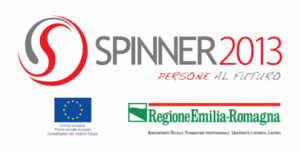
January 2013: Visiting assistant professor at SPADiC Lab
Guowei Lei, from Jimei University, China, has been a Visiting Assistant Professor at SPADiC Lab for nine months. His research topics include Space Time Codes and massive MIMO.Short biography
Guowei Lei is Assistant Professor at School of Science, Jimei University. He is also a PhD student in Beijing University of Posts and Telecommunications (BUPT). His research fields include Space Time Codes, massive MIMO, modulation and coding.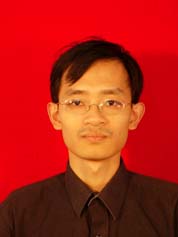
Prof. Guowei Lei.
October 2011: Coherent Optical networks for Terabit channels
Dr. Tommaso Foggi, affiliated researcher with the Research Unit of Consorzio Nazionale per le Telecomunicazioni (CNIT) based in Parma, has been awarded public funds (FIRB) amounting to 810.000 euros for the project: Coherent Optical Networks for Terabit Channels. The project will be carried out in collaboration with Scuola Superiore Sant'Anna (project coordinator) and Centro Integrato per le Reti e le Tecnologie Fotoniche of CNIT in Pisa. In particular, Dr. Foggi works in SPADiC Research Lab of the Department of Information Engineering of the University of Parma, directed by Prof. Giulio Colavolpe. The research activity will consist in designing and testing optical communication systems with a capacity up to 1000 Gigabits per second (1 Terabit/s). Moreover, highly reconfigurable optical networks, exploiting the new potentialities of the adopted transmission techniques, will be investigated as well. These new performance-improving transmission techniques have been proposed and studied by SPADiC Lab group, whose research fields are advanced communication systems for mobile, satellite and optical communications.September 2011: Tutorial on Time-Frequency Packing
Giulio Colavolpe delivered a tutorial on "Faster-than-Nyquist and beyond: how to improve spectral efficiency by accepting interference", at the 36th European Conference on Optical Communications (ECOC 2011), Geneva, Switzerland.
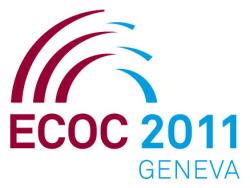
ECOC 2011 Logo.
March 2011: Amina Piemontese received her PhD degree in Information Technology
Amina Piemontese received her PhD degree in Information Technology discussing a thesis on "Advanced low-complexity multiuser receivers". Her PhD program was funded by Newtec Cy, Belgium, is a joint program with École Nationale Supérieure des Télécommunications de Bretagne (Co-Advisor: prof. Catherine Douillard).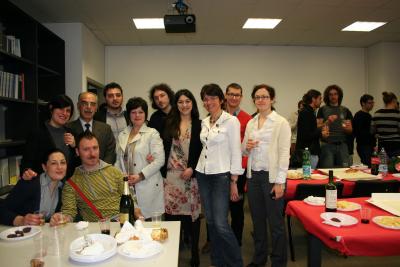
Amina Piemontese with the Co-Directrice de thèse Catherine Douillard (Département Électronique de Télécom Bretagne) and her family.
September 2010: Best paper award at ASMS/SPSC 2010
Amina Piemontese, Nicolò Mazzali and Giulio Colavolpe received the best paper award at the 5th Advanced Satellite Mobile Systems Conference and 11th Signal Processing for Space Communications Workshop (ASMS/SPSC 2010), Cagliari, Italy, for the paper "Improving the spectral efficiency of FDM-CPM systems through packing and multiuser processing".
ASMS/SPSC 2010 Logo.
September 2009: Final presentation at ESA-ESTEC
The outcomes of project "Study of enhanced digital transmission techniques for broadband satellite digital transmissions (BSDT)" (partners: University of Bologna, Italy, Newtec Cy, Belgium, École Nationale Supérieure des Télécommunications de Bretagne, France), funded by the European Space Agency (ESA-ESTEC), were presented at ESA-ESTEC. Within this project, the SPADiC lab selected the best continuous phase modulation formats from a spectral efficiency point of view for broadband satellite systems, designed Markov precoders to improve the spectral efficiency of the best selected CPM schemes, designed the algorithms for carrier synchronization and detection for the forward and return links based on CPM modulations and finally optimized the pilot symbol distribution for carrier synchronization purposes. These findings had an immediate application in the Sat3Play system terminals produced by Newtec Cy, and have been used to define the CPM modulation formats currently adopted in the DVB-RCS-NG standard.May 2008: Best paper award at ICC 2008
Giulio Colavolpe and Tommaso Foggi received the best paper award at the IEEE International Conference on Communications (ICC 2008), “Optical Networks and Systems Symposium”, Beijing, China, for the paper "Optimal electrical processing in multilevel optical systems insensitive to GVD and PMD," joint work with Enrico Forestieri e Giancarlo Prati from the University of Pisa. ICC is the most important international conference in field of Communications. ICC 2008 has received 3,135 submissions and only 36% of them have been selected for publication.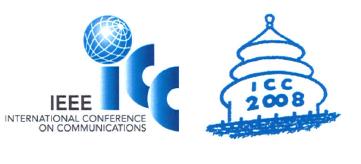
IEEE ICC 2008 Logo.
September 2005: Best paper award at SoftCOM 2005
Giulio Colavolpe received the best paper award at the 13th International Conference on Software, Telecommunications and Computer Networks (SoftCOM 2005), Split, Croatia, for the paper "VLSI design of a fully parallel decoder for LDPC-like codes," joint work with Pasquale Ciao and Luca Fanucci from the University of Pisa.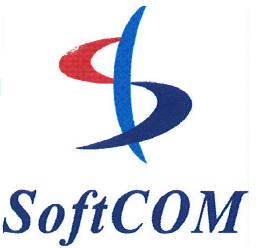
SoftCOM 2005 Logo.
